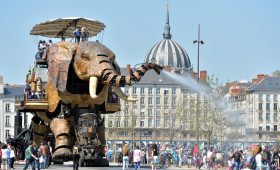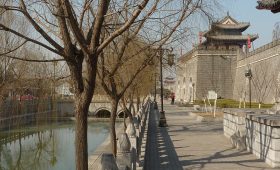Exploring Nara: A Journey Through Time and Nature
Visiting Nara, Japan, feels like stepping into a living tapestry of history and nature. As the capital of Japan during the Nara period (710-784), located in the Kansai region, Nara is easily accessible from Kyoto and Osaka, making it a convenient stop for travelers exploring Japan.
Historical Significance and Architectural Wonders
Nara’s historical importance is evident in its well-preserved temples and shrines, many of which are part of the UNESCO World Heritage Site known as the Historic Monuments of Ancient Nara. The city was Japan’s first permanent capital, established in 710 at Heijō-kyō, now modern-day Nara. This marked a shift from the previous practice of moving the capital with each new emperor.
Tōdai-ji Temple: Home of the Great Buddha
One of Nara’s most iconic landmarks is Tōdai-ji Temple, renowned for housing the Great Buddha (Daibutsu). This colossal bronze statue stands nearly 15 meters tall and is housed in one of the largest wooden structures in the world, the Daibutsu-den. The temple’s grandeur and the serene expression of the Buddha are awe-inspiring. Don’t miss the chance to try squeezing through the pillar with a hole the size of the Buddha’s nostril—a fun challenge for visitors.
Nara Park: A Natural Sanctuary
Nara Park is a sprawling green space where over 1,300 deer roam freely. These deer are considered sacred and are a symbol of the city. Interacting with them is a unique experience; you can purchase shika senbei (deer crackers) from vendors to feed them. The deer have even learned to bow in exchange for treats, adding a charming touch to your visit. While the deer are generally gentle, remember they are wild animals, so approach them with respect.
Seasonal Beauty and Cultural Festivals
The best times to visit Nara are during spring and autumn. In spring, cherry blossoms paint the city in delicate pink hues, while autumn brings a vibrant display of red, orange, and gold foliage. These seasons provide a stunning backdrop for exploring Nara’s attractions.
Otaimatsu Ritual at Nigatsudo Hall
For a truly mesmerizing experience, attend the Otaimatsu ritual at Nigatsudo Hall, part of the Omizutori festival held annually from March 1 to 14. Monks carry flaming torches across the temple balconies, creating a spectacle of sparks and smoke. The embers are believed to ward off evil spirits, and the ritual has been performed for over 1,250 years. It’s a captivating event that offers a glimpse into Nara’s rich spiritual traditions.
Getting to and Around Nara
Nara is conveniently located less than an hour from Kyoto and Osaka by train. From Tokyo, take the Shinkansen to Kyoto or Osaka, then transfer to a local train to reach Nara. Once in the city, the public transportation system, including buses and trains, makes it easy to navigate. Consider purchasing a Nara Bus Pass for unlimited rides within the city, offering a cost-effective way to explore.
In summary, Nara is a city where history, culture, and nature converge. From the towering Great Buddha to the gentle deer of Nara Park, every corner of the city tells a story.




